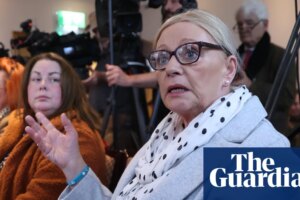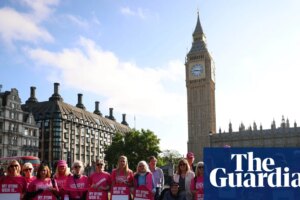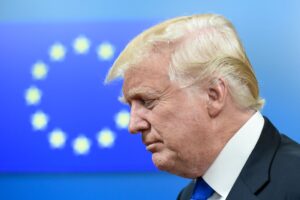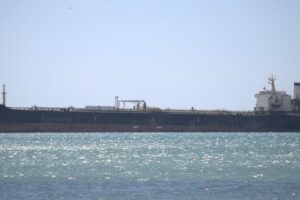
Twelve years after then-journalist Mustafa Nayem’s Facebook post ignited the EuroMaidan Revolution, another social media call — this time from war veteran Dmytro Koziatynskyi — mobilized thousands across Ukraine, united by a different cause.
The first wave of protests erupted on the evening of July 22, just hours after the Verkhovna Rada, Ukraine’s parliament, passed a bill widely seen as a direct assault on the independence of the National Anti-Corruption Bureau (NABU) and the Specialized Anti-Corruption Prosecutor’s Office (SAPO).
In Kyiv, demonstrators gathered outside the Ivan Franko National Academic Drama Theater, named after one of Ukraine’s most revered poets, not only for its symbolic significance, but because the square directly faces the President’s Office, making their presence impossible to ignore.
Although EuroMaidan, also known as the Revolution of Dignity, which toppled Viktor Yanukovych’s pro-Russian regime, happened over a decade ago, today’s protests echo similar demands: fighting corruption and heeding the voice of Ukrainian society.
“We have to protest again, but comparing this to EuroMaidan feels a bit misplaced. This is a peaceful protest. No one here is trying to overthrow the government. And thankfully, it seems the government is listening — at least to some extent,” Koziatynskyi, a veteran and the protest’s organizer in Kyiv, told the Kyiv Independent.
Following widespread criticism from both the Ukrainian public and international partners, Zelensky submitted a new bill to parliament intended to restore the independence of the anti-corruption agencies. The first reading is scheduled for July 31.
Meanwhile, public protests continue, with demonstrators determined to see the process through — just as they did more than a decade ago.
Natalka Sad
Ukrainian Armed Forces reserve officer, 38 years old
“I believe that the movement during EuroMaidan and today’s movement share common values. Ukrainians are not prepared to forgive the tightening of restrictions, the slide towards authoritarianism, or totalitarianism. That is not who we are.”
Natalka Sad in Kyiv, Ukraine on July 23, 2025. (Valentyn Kuzan / The Kyiv Independent)
“It would seem that we do not learn from history, but as today’s events show, our potential for protest remains very high. It would seem that the best of us are now defending our country, but at the protests, people are demonstrating that the rear is very strong and reliable to lean on.
It seems to me that military personnel really appreciate the fact that they can rely on us, that all is not lost, and that while they are defending us there, we are defending and protecting our constitutional rights and the future of our country here, in the center of the capital.”
Natalka Sad, then working at a media consulting firm, stands with colleagues on Maidan Nezalezhnosti Square in Kyiv, Ukraine, in December 2013. (Courtesy of Natalka Sad)
Oleksii Kyslyi
Manager at an IT company, 36 years old
“During Euromaidan, it was terrifying to even walk outside. My friend was shot while simply walking down the street. Thank God, he is fine now. Back in 2014, everything felt more extreme. The system was broken, and it needed radical change.”
Oleksii Kyskyi in Kyiv, Ukraine on July 24, 2025. (Danylo Antoniuk / The Kyiv Independent)
“It was a much scarier time. Now, things feel more peaceful and stable. But it is hard to predict what might happen next, especially in a country where so many people now have access to weapons. That uncertainty is frightening in its own way. Still, I feel safe and calm. right now”
Oleksii Kyskyi during protests on Hrushevsky Street in Kyiv, Ukraine, on Jan. 23, 2014. (Courtesy of Oleksii Kyslyi)
Nataliia Kostiuk
Ophthalmologist, 54 years old
“I have similar feelings about what happened in 2013–2014 and what’s happening now, but at the same time, they’re very different. Back then, there was no war, and older people were part of the protests. Now, it’s mostly young people, and emotions are running very high.”
Nataliia Kostiuk in Kyiv, Ukraine on July 23, 2025. (Valentyn Kuzan / The Kyiv Independent)
“During EuroMaidan, the mood was different — there was this sense that we were all in it together, that we would win because there were so many of us. Now, there is a deep sense of injustice, because there is a real war going on.
It is awful that some people are defending Ukraine’s very existence with their blood and lives, while here, the authorities are just tearing it apart. I think it is hard to even compare the two. This feels much harder, much more serious.”
Nataliia Kostiuk with her son and sister at a protest at Maidan Nezalezhnosti Square in Kyiv, Ukraine, in December 2013. (Courtesy of Nataliia Kostiuk)
Vasyl Tereshchenko
Educator, 49 years old
“This protest feels like a natural continuation of what happened in 2004 during the Orange Revolution and again in 2013–2014 with Euromaidan. I am from Kharkiv, and I stood on Maidan there during all those years. What really impresses me now — just as it did then — is how many young people are involved. They live in this country, and they should be the ones shaping its future.”
Vasyl Tereshchenko in Kyiv, Ukraine on July 23, 2025. (Valentyn Kuzan / The Kyiv Independent)
“We do not really understand why this particular bill was passed, but it is clearly not normal. What is most troubling is that, at the same time, my brother and many others are fighting on the front line, where there are far more urgent issues. For example, the law to increase funding for the Armed Forces was not passed — but this one was.”
EuroMaidan protests in Kyiv on Jan. 23, 2014 (right), and protests in Kharkiv on Sept. 28, 2014 (center and left), during the wave of “Leninopad,” (“The fall of Lenin” in English) when residents across Ukraine dismantled monuments to Soviet leader Vladimir Lenin.
“Nearly ten years after EuroMaidan, people are no longer afraid. And I am sure many of those protesting today voted for Zelensky. That gives them every right to speak out about what is happening.”
The “Crimea is Ukraine” campaign in the courtyard of Kharkiv National Pedagogical University in Kharkiv, Ukraine, on March 13, 2014. (Courtesy of Vasyl Tereshchenko)
Vadym Dudnyk
Game designer, 30 years old
“I did not believe Zelensky would actually sign the bill. Honestly, I thought it was just a clever PR move — that he would veto it in the end and come out looking like a hero. When he did not, I was deeply disappointed. But all we can do now is keep protesting.
Vadym Dudnyk in Kyiv, Ukraine on July 23, 2025. (Valentyn Kuzan / The Kyiv Independent)
“Unfortunately, I do not have any photos from those earlier protests (in 2013 and 2014). At the time, people in Luhansk did not really understand what was coming. We could not imagine that our city, our whole region, would be taken from us, or that war was about to begin. But after the first Russian attacks, it became clear something terrible was unfolding.
The strangest thing is that people quickly got used to the pro-Russian camp in the middle of the city. For some time, we just lived our lives, passing by this camp of armed savages every day, as if it were not there. And so it continued until the first explosions in the city in the summer.”
Camps of anti-Ukrainian protesters in Luhansk, Ukraine, in March and April 2014. At that point, the State Administration had already been seized by Russian forces. (Courtesy of Vadym Dudnyk)
Olena Herasimiuk
Paramedic, writer, 33 years old
“It is a strange feeling to find ourselves back here again. But it is encouraging to see so many young people in Ukraine who believe in democratic values and are willing to defend them using the means guaranteed by the Constitution.”
Olena Herasymiuk in Kyiv, Ukraine on Jul. 23, 2025. (Valentyn Kuzan / The Kyiv Independent)
“When EuroMaidan happened, I was a 22-year-old girl. It was something entirely new for us. It was frightening, and there was no one to turn to for advice — the Orange Revolution had been a completely different experience.
It was scary back then. But now, I realize the Revolution of Dignity (EuroMaidan) taught us some important lessons. Today, I feel more confident. I do not expect violence or shootings during protests. There is more hope now. I believe this will be resolved lawfully, and that the voices of the people will be heard.”
Olena Herasymiuk at the EuroMaidan protests in Kyiv, Ukraine, in the winter of 2013–2014. (Courtesy of Olena Herasymiuk)
Note from the author:
Hi, this is Kateryna, and I wrote this story for you. When EuroMaidan began in Kyiv, I was 15 years old and in the 10th grade. As a teenager, it was hard to grasp the full scale of what was unfolding, but even then, I felt a deep need to be part of it. Today, that feeling has not changed as I take to the streets to stand up for my rights and defend democratic values.
If you want more stories like this, consider joining our community today to help support our work.
Zelensky’s big blunder, explained
For many who came to know Ukrainian President Volodymyr Zelensky only after Russia’s full-scale invasion on Feb. 24, 2022, the president’s recent move on anti-graft agencies was jarring. In the early days of the invasion, Zelensky gained hero status after refusing to evacuate as Russian forces closed in on Kyiv. His daily addresses and global appeals rallied Western support and helped secure the military and financial aid that have kept Ukraine afloat. To much of the world, Zelensky became the





